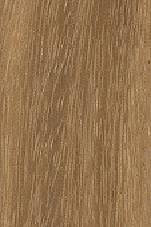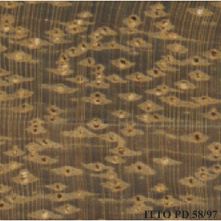
BLACK BEAN (Castanospermum australe)
Trade Name
Black bean
Scientific Name
Castanospermum australe A. Cunn. & C. Fraser
Family
LEGUMINOSAE
Common Names
Moreton Bay chestnut; Bean tree; Moreton bay chesnut (United States of America); Black bean (United Kingdom); Black bean (United States of America); Moreton bay chesnut (United Kingdom)
Description Of The Tree
Botanical Description
It is a medium-sized to fairly large tree up to 40 m tall. The bole is free of branches for up to 20 m, up to 135 cm in diameter. The buttresses are absent.
Natural Habitat
Castanospermum australe is reported in primary coastal rain forests and along beaches. It thrives on wet soils of moderate fertility.
Natural Distribution
It ranges from northern New South Wales to the Cook town-Atherton area of Queensland.
Plantations Available?
Plantations are reported in Sri Lanka and Papua New Guinea.
Non Timber Uses
Logs of this species are reported to present brittle heart. Black bean is reported to be not suitable for pulping, cement or particle board making.
Wood Identification
Anatomic Description Of Wood
Tangential diameter of vessel lumina 200 micras or more (large). Colored deposits in heartwood vessels. Vestured pits. Vessels per mm2 less than 6 (rare). Simple perforation plates. Intervessel pits small, 7 micras or less. Axial parenchyma lozenge-aliform. Axial parenchyma confluent. 3 to 4 cells per parenchyma strand. 4 to 10 rays per mm (medium). Rays and/or axial elements irregularly storied. Prismatic crystals in radial alignment in procumbent ray cells (chambered cells). Body ray cells procumbent with mostly 2 to 4 rows of upright and/or square marginal cells (Kribs-I Fibers with simple to minutely bordered pits.
-
 Wood Macro Photo Tangential Plane
Wood Macro Photo Tangential Plane
-
 Wood Micro Photo Of Transversal Section
Wood Micro Photo Of Transversal Section
Availability
Cites Status
Unrestricted
General Wood Description
Color
The sapwood ranges from white to yellowish. The heartwood is dark brown, darkening to almost back with age.
COLOR INDEX (1=Black, 7=Light yellow,white)
3
Grain
The grain is usually straight, occasionally interlocked.
Texture
A coarse texture is reported in this species.
Natural Durability
It is resistant to termite attack.
Natural durability index (1= Very high durability, 7=Vey low durability)
2
Resistance To Impregnation
The sapwood is moderately permeable to preservatives, but the heartwood is untreatable.
Wood Physical Properties
Basic Density or Specific Gravity (O.D. weight/vol. green) (g/cm³)
0.58
Air-dry Density (Weight and volume at 12%MC) (g/cm³)
0.64
Total shrinkage Tangential (Saturated to 0%MC) (%)
14.9
Total shrinkage Radial (Saturated to 0%MC) (%)
9.3
Drying Defects
Ease of Drying: Air seasoning is reported to be good but slow. Material thicker than one inch requires slow drying. Drying Defects: Honeycombing is reported in thick stock. It has a tendency to warp and check.
Recommended Dry Kiln Schedule
UK-C; US-T3-C2
Dimensional stability ratio (Total Tangential Shrinkage %/Total Radial Shrinkage %)
1.6
Wood Chemical Properties
Wood Mechanical Properties
Bending Strength (MOR),12%MC (kgf/cm²)
1039
Stiffness (MOE) 12%MC (kgf/cm²)
137565
Compression parallel to fiber 12%MC (kgf/cm²)
581
Compression perpendicular to fiber 12%MC (kgf/cm²)
92
Shear strength radial 12%MC (kgf/cm²)
127
Janka hardness (side) 12%MC (kgf)
703
Janka hardness (end grain) 12%MC (kgf)
839
Workability
Rotary Veneer Cutting
Tests on the suitability for the production of veneer showed moderate results.
Sliced Veneer
Tests on the suitability for the production of veneer showed moderate results.
Blunting Effect
Wood of this species produces a moderate blunting effect.
Machining
The working properties are generally satisfactory but may be affected by alternating soft and hard patches.
Turning
30
Nailing
This species is reported to have a good nailing behavior.
Gluing
It is easy to glue, but occasionally gluing is problematic because of the slightly greasy nature of the wood.
Staining
Wood of this species is easy to stain.
Polishing
It is easy to polish.
Steam Bending
This species is reported to have a moderate response to steam bending.
REFERENCED USES
End Uses Summary
HOUSING GENERAL, FURNITURE AND CABINETS, luxury furniture, cabinets, PLYWOOD AND VENEER, Decorative veneer, TURNING, SPORTS, CONTAINERS, truck bodies, truck flooring, NAVAL CONSTRUCTION, OTHER AND MUSICAL INSTRUMENTS, handicrafts, moldings
General Housing
- 10 - Silica in Timbers
Furniture Cabinets
- 21 - Tropical timbers of the world. Part III-Southeast Asian and Oceanian Species.
Furniture, Luxury
- 22 - Dry kiln schedules for commercial woods. Temperate and tropical. Section IV-Asian and Oceanian Woods
Cabinet
- 24 - Empire Timbers
Panels, Veneers
- 25 - Directory of Timber Trade Malaysia
Decorative veneer
- 28 - Ministry of Agriculture, Fisheries & Forest of Fiji
Turning
- 30 - Embassy of Honduras in Japan
Sports
- 38 - Annual Review and Assessment of the World Timber Situation 1998-ITTO
Truck Body
- 53 - Timbers of the New World
Truck Flooring
- 54 - Bulletin of the Government Forest Experiment Station N.157: Identification of Tropical Woods
Shipbuilding
- 55 - Tropical Timber Atlas of Latin America
Other & Musical Instruments
- 63 - Madeiras do Brazil II
Handcraft
- 66 - Maderas latinoamericanas. VII. Caracteristicas anatomicas. propiedades fisicomecanicas, de secado, y tratabilidad de la madera juvenil de Cordia alliodora (Ruiz & Pav. Oken.)
Molding
- 79 - Padronização da Nomenclatura Comercial Brasileira das Madeiras Tropicais Amazônicas, Sugestão
Please Provide Information To View Producer Information